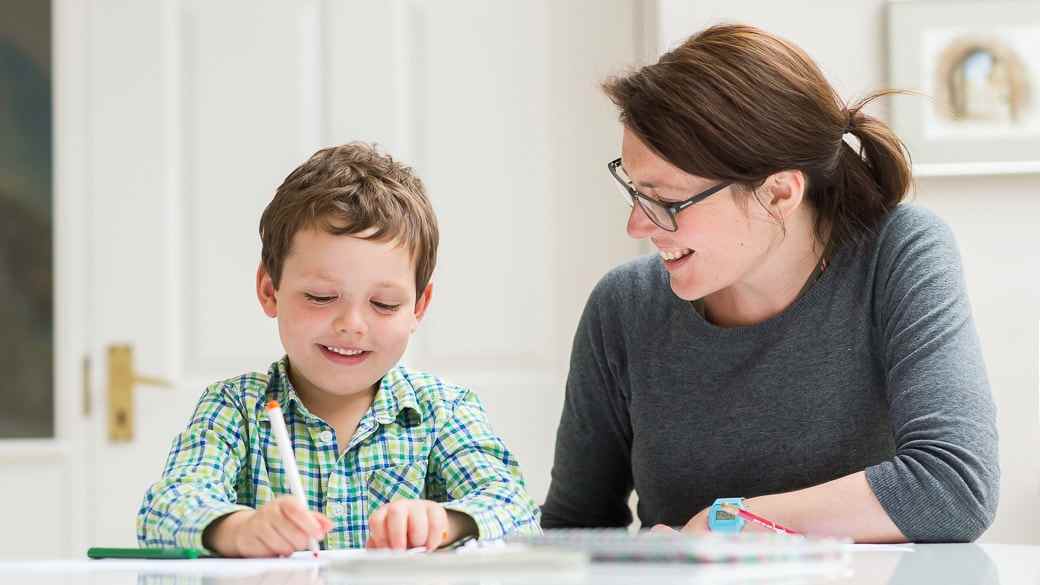Teaching a child to write is a complex process that takes plenty of time and patience. Most of us learnt to write such a long time ago that we don’t remember how we learnt ourselves, making it a difficult skill to teach. This article aims to guide you through the first stages of the learning to write process, and provides some handy tips to help you support your child to become a confident writer.
Pre-Writing Skills
There are a lot of skills that a child needs to develop before they are able to begin learning to write. These include hand-eye coordination, bilateral integration (the ability to use two hands together, with one dominant hand), upper body, hand and finger strength, visual perception (the brain’s ability to recognise images like letters and numbers) and a good pencil grip. Although children tend to develop these skills naturally, through play and everyday tasks, there are certain activities that can help your child to further develop their pre-writing skills:
Construction:
Building things with Mega Bloks, Lego or other construction toys is a great way to develop a child’s fine motor skills, hand-eye coordination and concentration.
Painting, drawing or colouring:
You don’t have to use a pencil and paper if your child isn’t ready. Start with finger painting, or use cotton buds to create dot paintings. Try drawing with thick chalks on the ground, or a vertical board, before moving on to pen and paper.
Playdough:
Motions like kneading, rolling and shaping will all help to develop your child’s hand and finger strength. Using playdough to form shapes, number and letters is a great way to introduce your child to writing.
Arts and crafts:
Many of the skills involved in arts and crafts such as cutting, sticking, scrunching paper or threading beads onto string are fantastic ways of developing hand-eye coordination and improving focus and concentration.
Visiting the playground:
Climbing on, and hanging, from play equipment will help to develop your child’s finger, hand and upper body strength. Throwing and catching is also a great way to improve your child’s hand-eye coordination.
Letter Formation
Once your child has developed the necessary pre-writing skills, they can begin learning to form letters. Listed below are some recommendations for teaching letter formation:
- Start by teaching your child to draw some basic shapes and patterns. Learning to draw horizontal and vertical lines, circles and crosses, will provide a good foundation for letter formation.
- The usual order for teaching letter formation is tracing, then copying, then writing with a starting point cue, and finally writing independently. Make sure your child can do each of these stages confidently, before moving on to the next one.
- Remember, it is not just the end result that is important; it is crucial that your child learns to form letters the right way from the very beginning. If your child develops bad habits early on, they will find handwriting increasingly difficult as they move on to writing longer pieces. Try creating little rhymes or songs to help your child remember the order of formation. For example, ‘round the apple then down the leaf’ makes the letter a.
- You may find it useful to teach each ‘letter family’ at a time. The letters in each family are formed in a similar way, making the learning process simpler. The letter families are as follows:
- Ladder letters (pencil goes down first) – l, i, j, t, u, y
- Curly letters (pencil goes over, then back around) – c,a,o,q,g,d,e,s,f
- One-armed robots (pencil goes down, then over) – r,m,n,h,b,k,p
- Zigzag letters – v,w,x,z
Top tip: Get creative! You don’t have to use a pencil to form letters. You could try writing in sand, shaving foam or cornflour gloop. Lots of shops sell wipe-clean handwriting books, or there are many free ipad apps that make letter formation fun. The more your child enjoys learning to write, the more they will practise and the better they will get!
